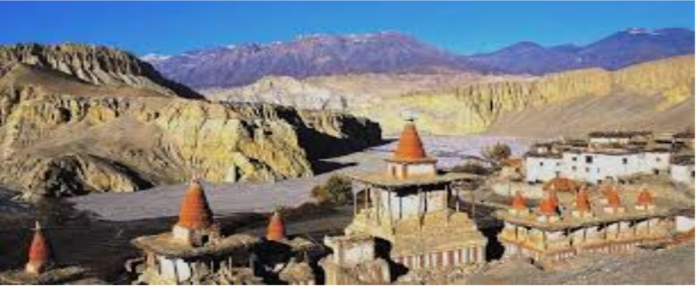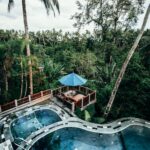Mustang Trekking offers a wide range of landscapes and cultural experiences, but few can rival the mystique and allure of the. Known as the Upper Mustang is a remote and ancient land nestled in the rain shadow of the Tibetan plateau. This region remained isolated from the outside world until the early 1990s and still retains a rich tapestry of Tibetan Buddhist culture, medieval architecture, and a dramatic, desert-like landscape.
Discovering the Forbidden Kingdom
Upper Mustang was once an independent kingdom known as, with as its capital. Even after Nepal unified in the 18th century, Mustang maintained a degree of autonomy and continued to preserve its unique culture and traditions. Today, trekking to Upper Mustang offers an extraordinary opportunity to step into a —complete with royal palaces, ancient monasteries, and cliffside cave dwellings.
The Upper Mustang Trek typically begins with a flight from Pokhara to, followed by several days of trekking through the Kali Gandaki Valley. The trail gradually climbs through stark canyons, barren plateaus, and windswept ridges, with scattered villages offering warm hospitality. This semi-arid desert landscape, sculpted by wind and time, is unlike the lush greenery found in other parts of Nepal. Instead, you’ll find earth-toned cliffs, eroded rock formations, and ancient trails used by salt traders for centuries.
Cultural and Spiritual Immersion
Trekking in Mustang is as much a cultural experience as it is an adventure. The region is deeply influenced by Tibetan Buddhism, and the trail is dotted with chortens, prayer flags, mani walls, and centuries-old monasteries. One of the cultural highlights is reaching Lo Manthang, a walled city that has preserved its medieval charm. Its narrow alleys, whitewashed buildings, and sacred temples offer a glimpse into a world that has resisted the march of modernity.
Visitors during late spring may witness the famous Tiji Festival, a three-day ritual celebrated with colorful dances and religious ceremonies. The festival commemorates the triumph of good over evil and is a significant spiritual event for the local community, as well as a fascinating spectacle for trekkers.
Scenic and Unique Landscapes
Unlike other Himalayan regions, Mustang remains dry and accessible even during the monsoon, making it one of the best trekking options during the summer months. The scenery is vast and awe-inspiring, offering panoramic views of snow-capped peaks such as Nilgiri, Tilicho, Dhaulagiri, and parts of the Annapurna range. The high-altitude desert terrain, shaped by centuries of erosion, adds a surreal quality to the journey.
Though the trek reaches elevations up to 4,200 meters, the ascents are gradual, making it suitable for moderately experienced trekkers with a good fitness level. The region also has a growing network of teahouses and lodges, providing basic but comfortable accommodations along the route.
Permits and Practical Considerations
Because Upper Mustang is a restricted area, trekkers must obtain a special permit issued by the Government of Nepal. The permit requires a minimum of two trekkers accompanied by a licensed guide. Additional permits include the Annapurna Conservation Area Permit (ACAP). The trek usually lasts 12 to 15 days, depending on the route and acclimatization schedule.
The best times to trek are spring (March to May) and autumn (September to November), though the region is also ideal in June and July due to its dry climate.
Conclusion
The Upper Mustang Overland Tour is a rare and enriching journey into a land where time seems to stand still. It offers a stunning contrast of culture and nature—where barren cliffs meet vibrant festivals, and ancient Buddhist traditions flourish amidst stark Himalayan beauty. For those looking to explore a lesser-known but deeply rewarding trail, trekking through Mustang is an unforgettable adventure into Nepal’s mystical highlands.










